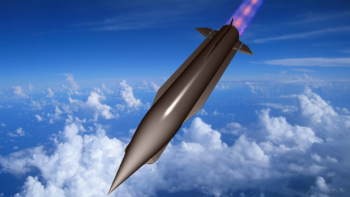
WASHINGTON: Hey, defense contractors! Open source software is not your enemy. In fact, far from undercutting your profits, it may increase them – and increase the US military’s capabilities at the same time. That’s a central concept in the Center for a New American Security’s recently established Technology and Security program, which aims to shake up how government and business keep pace with ever-changing technology, an ever-increasing concern for military leaders.
“Open source doesn’t mean free, open source means better – and it actually might mean more expensive, it might actually be more money,” CNAS adjunct Peter Levin, who’ll help run the new program, told me in an interview on Friday. “There’s nothing about open-source and open standards that in any way implies lower cost.”
“Open source software,” Levin lamented, “is anathema to the defense contacting community ….They immediately, reflexively, allergically react and say you are trying to give away for free what I make money at, and oh by the way you’re compromising national security.” Not so, he said.
Even if the initial sale of something open-source is less profitable than providing the government a proprietary system, Levin argued, the fact that open-source software is vastly more adaptable makes it much easier to upgrade – and that’s where the money is. “You can, in fact, extract more rent from operating it [and delivering] continuous improvement,” Levin said. (He means “rent” in the economic sense of extra profits reaped by a well-positioned player, not in the usual sense of leasing something).
What’s more, added Ben Fitzgerald, the director of the new CNAS program, using open-source software makes it much easier to get past ITAR restrictions on selling weapons systems abroad or collaborating with foreign companies – both essential to a shrinking US defense industrial base. So does building a weapons system or its software out of plug-and-play modules, rather than as a single tightly integrated whole: If one piece is too sensitive to export, open architecture allows you to swap it out for something else and push ahead with the sale.
Those are the kind of win-win innovations that Fitzgerald and his CNAS colleagues are pushing. “We don’t necessarily want to get into, ‘here’s how the Department of Defense should undertake its 18th attempt at acquisition reform,’” he told me Friday. Yes, there have been a lot of expensive acquisition foul-ups in recent years, from the Army’s cancelled Future Combat System to the truncated Air Force F-22 program to the struggling tri-service F-35 Joint Strike Fighter, but “that isn’t necessarily the case of bad decisions by inept leaders,” Fitzgerald said. “It’s more the natural culmination of preexisting ways of doing business running into new kinds of technology.”
It’s not just that technology is advancing so swiftly, Fitzgerald argued: It’s who’s advancing it. The 21st century is looking less like the 20th, when governments and defense companies drove technological advances, and more like the 19th, when new civilian communication technologies – the telegraph and railway then, the Internet today – revolutionized military operations almost as a trickle-down effect.
The changing world requires the defense sector to change with it. A major weapons program nowadays takes 20 years to research, develop, and start to field, and then it has to stay in service for 20 years, 30 years, or more to make up for those staggering start-up costs. “That means,” Fitzgerald said, “we need to be able to look 60-70 years into the future. We’re not really good at looking six months into the future.”
Instead, he said, the military should only lock itself into a particular buy for, say, three years, and then recompete and upgrade the system. (Perhaps the leading example of this in real life, although Fitzgerald didn’t bring it up, is the Army’s biannual “capability set” system to develop and field a technology upgrade package – mostly network communications systems – every other year. Opening that process to small business, however, has proved difficult).
Enabling this kind of constant redesigning and upgrading, Fitzgerald said, is where additive manufacturing can really make a difference. “I’m not especially interested in the ability to print a single .22 caliber pistol,” he said. “I think that the technology is overhyped and underhyped at the same time. It’s not actually about the printer itself,” but about additive manufacturing as just one component of a new approach to research, development, and manufacturing.
The problem is, of course, that America’s enemies can ride this wave as well as we can – if not better because they lack our bureaucratic inertia and political gridlock. “There are many people who worked in Iraq who made the point that enemy took the ‘I’ out of the IED [Improvised Explosive Device] very quickly,” Fitzgerald said.
Those trends are deeply troubling to US military leaders. The Army’s current research and development program won’t get it where it needs to be by the 2030s, a group of senior officers and civilians agreed in discussions at the Army War College last month, and enemies may catch up to or even overtake American technology.
“Our advantage is sustainable through the next two decades or so, but as you get into the 2030-2040 period…if we stay on this path, we very likely will put our soldiers in the future at risk,” said one general. “They will lose the competitive advantage that we’ve come to know and love.” (I was allowed to attend and quote from the discussions on the condition that I not identify participants by name).
The problem is not just funding science and technology (aka S&T) but setting it free to innovate, argued Army scientists. “By tying everything to programs of record” – i.e. what’s already in official plans – “we are essentially working on near-term things,” fumed one. “If we continue to just constrain everything [to meet a requirement] that was probably thought about 20 years go and not allow the laboratories to truly innovate on the S&T path, we are going to be stuck with what we got.”
“We have to set ourselves up to be able to capitalize on the technology trends of the future a little better,” added another Army scientist. “We’re asking people to think out of the box, think creatively….It’s policies, it’s procedures, it’s environment, it’s culture.”
The new CNAS project, Fitzgerald said, wants to lend a hand to would-be innovators, not point fingers at them. “This is hard,” he told me on Friday. “We’re not saying, ‘This is a simple problem and why hasn’t the Department of Defense figured this out?’….All we want to do is generate good ideas and put them out there in a manner that allows people to pick those ideas up and implement them.”
As technological innovation both accelerates and moves out of the traditional military-industrial complex, Fitzgerald said, “we need to do things differently and we need to do different things.”
Intelligence for multi-domain warfighters can now be sourced from logistics operations
All-source intelligence can be leveraged by artificial intelligence and machine learning to inform CONOPS like Joint All Domain Command and Control.



























